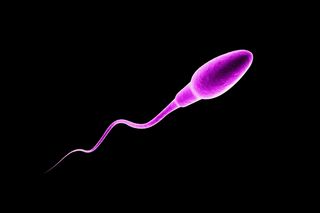
Sperm Count Is Rapidly Declining Around the World: Study
Rapidly falling sperm counts and concentrations may have massive public health implications, and may lead to a reproductive crisis.

Scientists say a reproductive crisis may be looming. According to a new study, sperm count among men is declining at an accelerated pace across the globe. Rapidly falling sperm counts and concentrations may have massive public health implications which go much beyond fertility and reproduction, the study’s authors noted, while underscoring a need for urgent research on the possible causes and preventive measures.
In 2017, the researchers had reported that sperm concentration had fallen by over half in four decades. However, these findings were limited to men from Europe, North America, Australia and New Zealand. In their new study, published in the journal Human Reproduction Update, the researchers conducted a meta-analysis of 223 studies from 53 countries, including data from over 57,000 men who were not known to be infertile, making this the largest examination of sperm count and concentration.
This decline was evident in Central and South America, Africa and Asia too. Prof Hagai Levine, the study’s lead author, told PTI that India is part of this larger trend as well.
“On a population level, the drop in mean sperm count from 104 to 49 million/ml that we report here implies a substantial increase in the proportion of men with delayed time to conception,” the researchers wrote in their paper. Professor Levine further added, “Such a decline clearly represents a decline in the capacity of the population to reproduce,” pointing to a potential reproductive crisis.
There are two metrics to consider: sperm concentration and total sperm count. Sperm concentration refers to the number of sperms per milliliter of semen, while total sperm count is the total number of sperms in an entire ejaculation — usually calculated by multiplying sperm concentration with semen volume.
The results of the recent study confirmed the researchers’ previous findings. Between 1973 and 2018, average sperm concentration fell by 51.6% – from 101.2 million to 49 million per milliliter. The total sperm count fell by 62.3% during this time period.
Over the years, the rate of sperm concentration decline has also increased. When the researchers analyzed all the collected data since 1972, they found that sperm concentrations declined by 1.16% each year. However, when only data collected post 2000 was studied, the rate of decline doubled to 2.64% per year.
“I think this is another signal that something is wrong with the globe and that we need to do something about it. So yes, I think it’s a crisis, that we [had] better tackle now, before it may reach a tipping point which may not be reversible,” Levine told The Guardian.
Related on The Swaddle:
Low Sperm Count May Signal More Than Just Infertility in Men
The implications of a global decline in sperm count and concentration are wide. The researchers noted that while sperm concentration above the threshold of 40 million per ml does not imply a higher probability of conception, fertility could be impacted if sperm concentration falls below this level.
A 2015 study, however, said that sperm count and sperm concentration may not be the ideal predictors of fertility we believe them to be. Instead, total motile sperm count, or the number of sperms that are able to swim, might be a more accurate factor to analyze.
What low sperm count does, however, is negatively impact men’s health. “The troubling declines in men’s sperm concentration and total sperm counts at over 1% each year as reported in our paper are consistent with adverse trends in other men’s health outcomes, such as testicular cancer, hormonal disruption, and genital birth defects, as well as declines in female reproductive health,” Professor Shanna Swan at the Icahn School of Medicine told PTI, adding that low sperm count might be associated with what is known as testicular dysgenesis syndrome.
What is causing this decline in sperm counts and concentrations remains unclear. While their research did not study possible causes, experts say there could be multiple factors at play. “Exposure to pollution, plastics, smoking, drugs, and prescribed medication, as well as lifestyle, such as obesity and poor diet, have all been suggested to be contributory factors although effects are poorly understood and ill-defined,” Sarah Martins da Silva, who is an expert in reproductive medicine at Scotland’s University of Dundee and was not a part of the study, told AFP.
Professor Richard Sharpe, an expert in male reproductive health at the University of Edinburgh highlighted another ramification of declining sperm count. “These issues are not just a problem for couples trying to have kids. They are also a huge problem for society in the next 50-odd years as less and less young people will be around to work and support the increasing bulge of elderly folk,” Sharpe said.
Related on The Swaddle:
New Research Links Poor Sperm Quality to Rising Air Pollution
Though the recent study excluded men who were known to be infertile, and took into account factors including age, the amount of time men spent without ejaculating and sample collection method, a limitation of the study is that it did not look at other markers such as sperm motility.
Over the years, research reporting a decline in sperm concentration has been mired in controversy. The 2017 study by the authors of the recent meta-analysis was criticized for its design that reinforced racist and colonial hierarchies by focusing on Western countries, and did not take into account geographical variability. A 2001 paper further noted that many published studies were imprecise when describing population characteristics and were not designed with controlled and standardized methodology.
Some experts have also raised concerns regarding the quality of data published in papers that were part of the recent study. Allan Pacey, Professor at the University of Sheffield, said that counting sperm is a difficult task, and the falling rates could be because we have “simply gotten better” at it due to the development of training and quality control programmes.
Still, others have dismissed critics, pointing to the consistency in results over the years. “You keep on finding the same trend, no matter how many studies you include – that is a bit scary to me,” Tina Kold Jensen of the University of Southern Denmark told The Guardian. The worrying numbers and rapid decline in sperm count and concentration has prompted the researchers to call for further studies, specifically into causes and preventive measures to stem “further disruption of male reproductive health.”
Ananya Singh is a Senior Staff Writer at TheSwaddle. She has previously worked as a journalist, researcher and copy editor. Her work explores the intersection of environment, gender and health, with a focus on social and climate justice.
Related


Processed Foods Cause Unhealthy ‘Protein Hunger,’ Says Research
